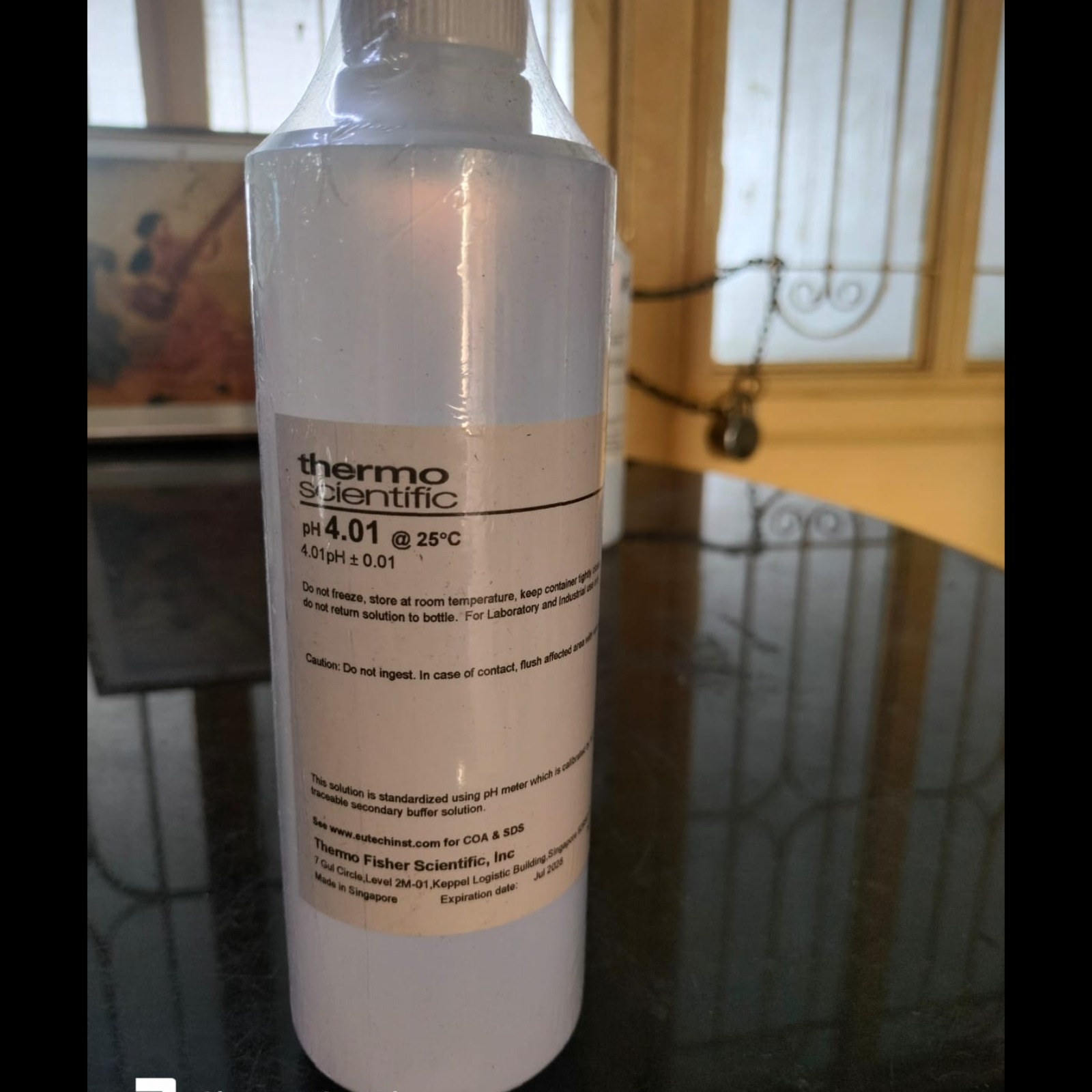
2025-10-10T07:18:14
A pH 4.0 buffer solution is an acidic solution used to calibrate pH meters and maintain stable pH levels in laboratory and industrial applications. It is a standard reference material with a pH of approximately 4.0 ±plus or minus± 0.02, used to ensure accurate pH measurements and resist changes when small amounts of acid or base are added. These solutions are composed of specific chemicals like citrate, sodium chloride, and sodium hydroxide and are often traceable to national standards like NIST. Key details Function: It acts as a standard for calibrating pH meters, ensuring accurate readings in chemical and biological tests. It also maintains a stable, slightly acidic pH in various applications. Composition: Typically made from a mixture of chemicals, such as citrate, sodium chloride, and sodium hydroxide, to create a stable acidic buffer. Acidity: It is an acidic buffer, with a pH less than 7. Tolerance: The pH is usually specified with a tolerance, such as ±plus or minus± 0.02, to ensure its accuracy. Temperature dependency: The exact pH of the solution can vary slightly with temperature, which is an important factor to consider during calibration. Traceability: Many commercial pH 4.0 buffers are traceable to standard reference materials from institutions like the National Institute of Standards and Technology (NIST). Storage and stability Sealed container: Always store buffer solutions in tightly sealed containers to prevent changes from evaporation or exposure to air. Cool, dark location: Store the solution in a cool, dry place away from direct sunlight, which can alter the temperature and affect stability. Limited shelf life: Commercial pH 4.0 buffers often have a two-year shelf life when unopened. Once opened, their stability is limited, typically to 6–12 months. Discarding: Do not pour used buffer back into the stock bottle, as this will cause contamination and alter the pH. Discard any buffer used for calibration after a single use.

Have a question? Ask here!
Required fields are marked *